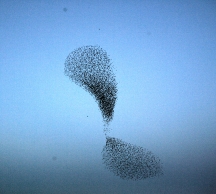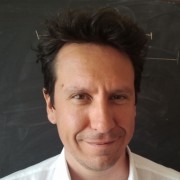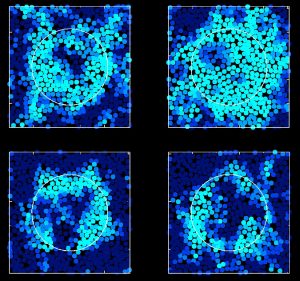Andrea Cavagna
Research Director
- andrea.cavagna@roma1.infn.it
- +39 06 4993 7460
I work at the Institute for Complex Systems of the National Research Council, in Rome. I have a background in theoretical physics and statistical field theory. After studying for some time the statistical mechanics of disordered systems, as spin-glasses and supercooled liquids, my research interests shifted in the last ten years to the collective behaviour of biological systems. I am the coordinator of the ERC Advanced Grant RG.BIO. In 2021 I have been awarded, with Irene Giardina, the Max Delbrück Prize in Biological Physics of the American Physical Society.
EDUCATION
- 1999-2001 Post-Doc, Theoretical Physics, Manchester University (with Alan Bray and Mike Moore)
- 1998-1999 Post-Doc, Theoretical Physics, Oxford University (with David Sherrington)
- 1998 PhD, Theoretical Physics, University of Rome Sapienza (Spin-Glasses – advisor Giorgio Parisi)
- 1995 MSc, Theoretical Physics, University of Milan and SISSA – Trieste (Conformal Field Theory – advisor Giuseppe Mussardo)
My lab – Collective Behaviour in Biological Systems (COBBS)

Drops of Flocks.
COLLECTIVE BEHAVIOUR
I lead with Irene Giardina the COBBS Lab (Collective Behaviour in Biological Systems), whose aim is to obtain 3D experimental data in the field and to develop new theory directly from the data. My lab has been the first to combine the production of large-scale data (groups of up to 3000 individuals) with a theoretical approach inspired by statistical physics and field theory (i.e. you need to know the Goldstone theorem to work with us). Our principal systems of interest are bird flocks and insect swarms, but we are currently starting new projects on the collective properties of stem cells colonies and on the swarming dynamics of malaria mosquitoes. Here you can find a short list of some of our most relevant publications, with a brief commentary on each one of them.
To get a general idea of my work you can watch the Public Lecture that I gave at the Institut Poincare’, in Paris. Other talks and lectures can be found here.
If you are an italian student, here you can find a recent science popularization talk that I gave at TEDx-Napoli, about collective behaviour and the order-disorder transition (in Italian).
People in my group say I’m a jerk! Check this great video (mostly in italian) on how it is working with me.
TEACHING
I teach the 40hrs course in Statistical Field Theory for graduate students at the PhD School in Physics at the University Sapienza. You can find the syllabus here.
MY PREVIOUS LIFE
In the first ten years of my career I studied non-equilibrium glassy systems, with some interdisciplinary detours. My statistical physics training was steered by Giorgio Parisi, with whom I worked on spin-glasses during my PhD years. My first single-author breakthrough came while a post-doc in Oxford, when I wrote a paper in which I showed that memory was actually irrelevant in a simple model of economic dynamics. I made a second solo contribution when I pointed out the role of unstable stationary points (saddles) in the free energy landscape of glassy systems to explain their different dynamical properties; this gave rise to a noteworthy collaboration about glasses with Kurt Broderix and Annette Zippelius. While in Oxford, Juan P. Garrahan, Irene Giardina and I were the first to study the role of the Becchi-Rouet-Stora-Tyutin (BRST) supersymmetry and of the related Ward identities in spin-glasses; back in Rome, our BRST line of research led to an important collaboration with Marc Mezard and Giorgio Parisi about marginal states in spin glasses. Later, working with Giulio Biroli, Jean P. Bouchaud, Tomas Grigera and Paolo Verrocchio, I gave an interesting contribution to the physics of glasses by measuring numerically for the first time the so-called point-to-set correlation length; this was the first determination of a purely static length scale growing in the glass phase and it is now a fairly standard tool in the field.
MY PEDESTRIAN REVIEWS ON GLASSY SYSTEMS
Check my pedagogical reviews on spin-glasses and supercooled liquids, the infamous Spin-Glass Theory for Pedestrians and Supercooled Liquids for Pedestrians.
CONTACT DETAILS
Dr Andrea Cavagna ISC – CNR Via dei Taurini 19 00185 Rome Italy
tel: +39 06 4993 7460
fax: +39 06 4993 7440
email: andrea.cavagna@roma1.infn.it
MONGIBELLO
This is it, the Mongibello.




